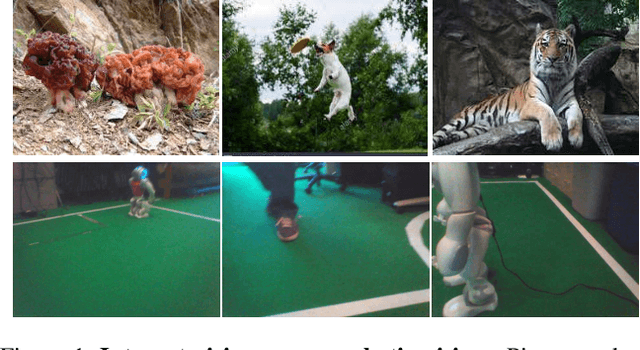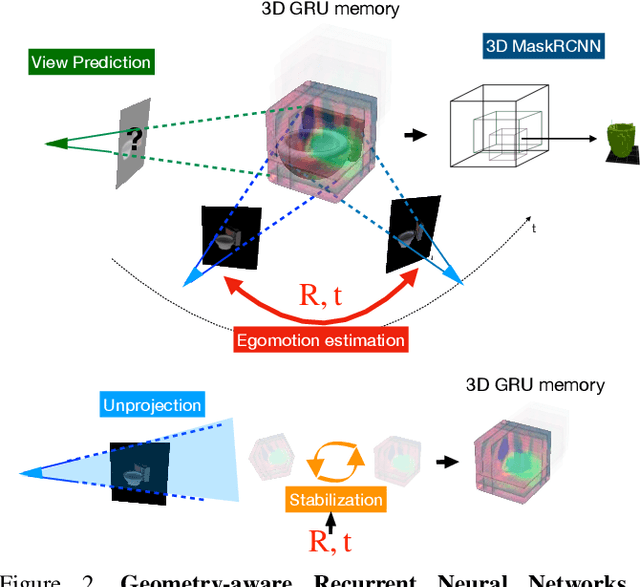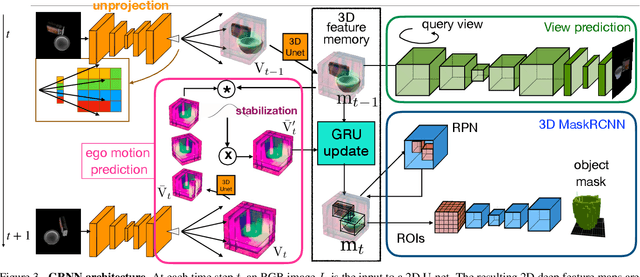Learning Spatial Common Sense with Geometry-Aware Recurrent Networks
Paper and Code
Dec 31, 2018



We integrate two powerful ideas, geometry and deep visual representation learning, into recurrent network architectures for mobile visual scene understanding. The proposed networks learn to "lift" 2D visual features and integrate them over time into latent 3D feature maps of the scene. They are equipped with differentiable geometric operations, such as projection, unprojection, egomotion estimation and stabilization, in order to compute a geometrically-consistent mapping between the world scene and their 3D latent feature space. We train the proposed architectures to predict novel image views given short frame sequences as input. Their predictions strongly generalize to scenes with a novel number of objects, appearances and configurations, and greatly outperform predictions of previous works that do not consider egomotion stabilization or a space-aware latent feature space. We train the proposed architectures to detect and segment objects in 3D, using the latent 3D feature map as input--as opposed to any input 2D video frame. The resulting detections are permanent: they continue to exist even when an object gets occluded or leaves the field of view. Our experiments suggest the proposed space-aware latent feature arrangement and egomotion-stabilized convolutions are essential architectural choices for spatial common sense to emerge in artificial embodied visual agents.
 Add to Chrome
Add to Chrome Add to Firefox
Add to Firefox Add to Edge
Add to Edge